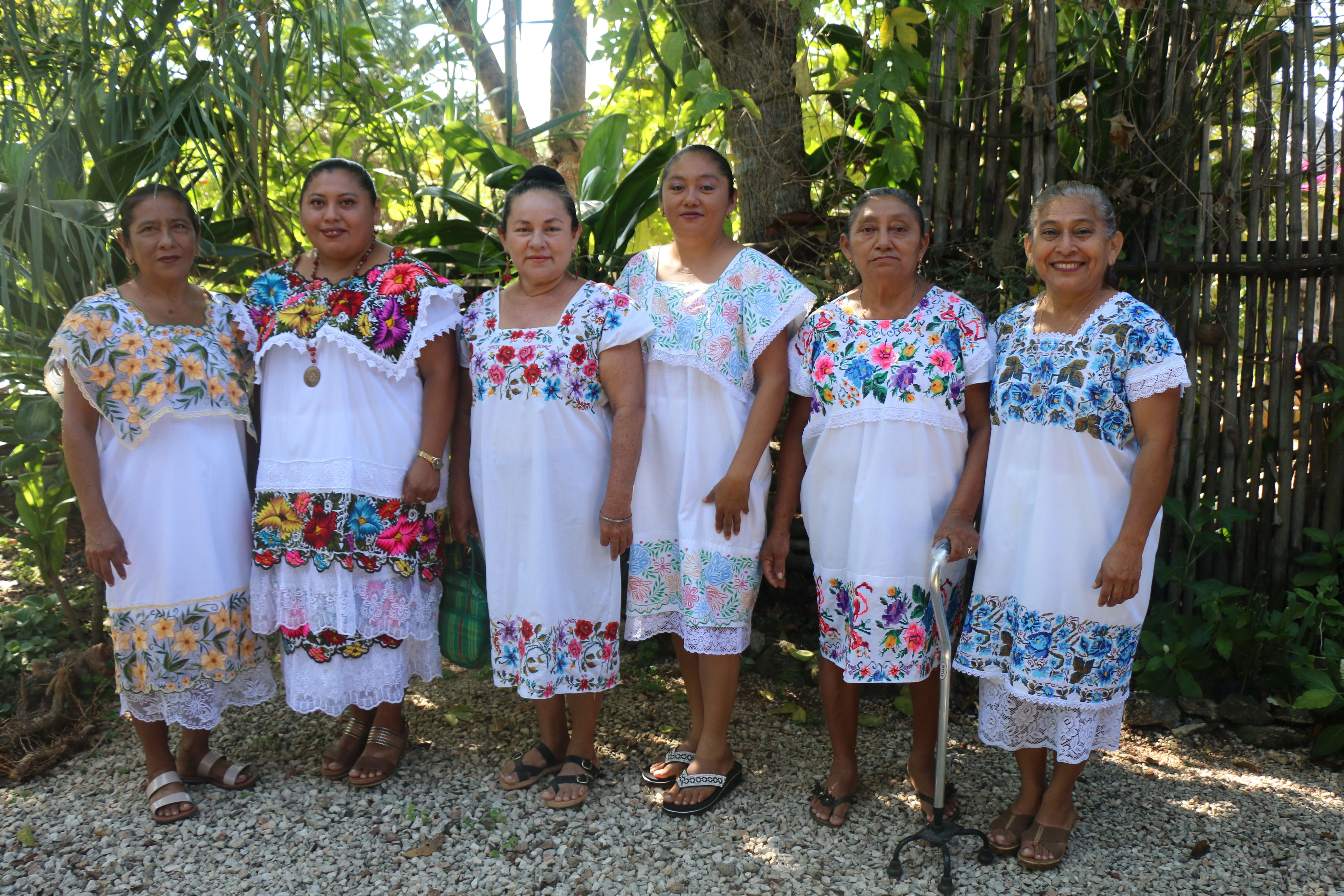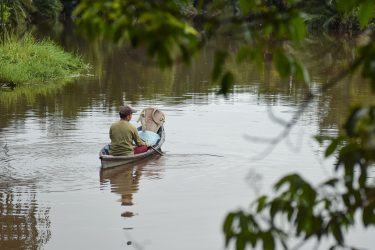
Photo: Roxana Auhagen / UNDP

A key opportunity when working in rural or forest-based communities is creating inclusive spaces that empower women, particularly Indigenous women, to engage fully and contribute their unique perspectives. Photo: Roxana Auhagen / UNDP
When addressing the climate crisis, placing gender equality at the heart of climate action doesn't just support women – it leads to better outcomes for entire communities. Promoting gender equality in climate action is essential as it recognizes women as key stakeholders in natural resource management, reduces their vulnerability to climate change, ensures fair distribution of resources and leads to more inclusive decision-making. By ensuring all people, regardless of gender, have equal opportunities to participate, contribute, and lead in climate action, we create more effective and sustainable approaches that benefit everyone involved.
But why does centering gender in climate and forest policy matter? In short, women and men’s specific roles, rights and responsibilities, as well as their knowledge of forests, shape their experiences differently. These gender-differentiated needs, uses and knowledge of the forest are critical inputs to policy and programmatic interventions that will enable the success of forest and climate action on the ground As such, inclusive policies that account for these gender dynamics and integrate a gender approach not only just empower women but also lead to more effective and lasting solutions to deforestation and climate challenges. Our latest report, "Gender Front & Centre: Best Practices from the Governors’ Climate & Forests Task Force", looks at best practices in five innovative jurisdictions from the Governors’ Climate & Forests Task Force (GCF Task Force): Pará (Brazil), Pastaza (Ecuador), West Kalimantan (Indonesia), and Jalisco and Yucatán (Mexico).
When we looked closer at the most successful actions, five themes emerged.
1. Gender equality should be a cornerstone of the planning process
Early integration of gender considerations during project planning leads to greater equality in outcomes. This means thinking about gender from day one – whether it’s building it into activities, monitoring frameworks, or budgets.
Several regions featured in the report made significant investments in gender-responsive project design. In Pastaza, Ecuador, for instance, the program provided crucial support to local governments and staff to increase their capacity for gender-responsive project implementation and monitoring. This effort led to notable results, like increased women’s participation in the project – not just in numbers but in the quality of their engagement. One inspiring outcome from Yucatán, Mexico, was progress in securing property titles for Indigenous women, giving them more power over their land and livelihoods.
2. Good data is key: Quality, quantity, and frequency matter
Collecting gender data is essential to understanding the full picture of how climate action impacts men and women differently. But it’s not just about counting how many women attend a meeting or training. It’s about ensuring women’s voices are heard, their perspectives are valued, and their needs are met.
In West Kalimantan, Indonesia, the jurisdiction didn't just count how many women participated in meetings and workshops. They dug deeper – asking whether women felt empowered to voice their concerns and whether those concerns were actually heard and addressed.
Over two years, the team tracked participation across every event and meeting, resulting in detailed quantitative and qualitative data. This provided a clear picture of the level of women’s involvement and their influence. For instance, by the second half of 2021, women’s participation in discussions jumped, with a higher percentage of women expressing their opinions and having those opinions accepted by the group.
Similarly, in Jalisco, Mexico, the jurisdiction focused on traditionally male-dominated sectors like ranching. After training sessions, the team interviewed women to gather insights on whether they felt their perspectives were considered and whether their economic contributions were valued. These surveys helped project staff track gender-based indicators, allowing for quick adjustments to improve inclusivity.

In West Kalimantan, Indonesia, women’s participation went beyond attendance, focusing on empowering them to voice concerns and ensuring they were heard. Photo: IDH Indonesia
3. Innovation to overcome gender barriers is needed – and doable
In recent years, jurisdictions have taken remarkable strides in innovating inclusive methods for data collection and result measurement. These efforts aim to shine a spotlight on the crucial roles women play in forest-based and agricultural activities – roles that have often gone unrecognized - by actively engaging them and tailoring approaches to be culturally relevant and accessible in their native languages. Some regions found creative ways to get around these barriers. One of the biggest challenges when working in rural or forest-based communities is ensuring that women, especially Indigenous women, can fully participate. In Yucatán, Mexico, for example, written feedback was often impractical due to language or cultural barriers. So, the project introduced a simple yet effective solution – using green and red paddles for participants to agree or disagree with statements, such as whether they felt included. This method made it easier for everyone to participate, regardless of literacy levels or language barriers.
These innovative tools also helped address intersectional barriers. Gender inequality often intersects with other identities, such as ethnicity, to create multiple layers of discrimination. By recognizing and tackling these overlapping challenges, projects became more inclusive and effective.
4. Empowering women as leaders and equal partners
In many of the jurisdictions, women are not just seen as participants but as crucial partners and leaders in forest and climate projects. Rather than only considering them as beneficiaries, projects in these areas actively involved women in leadership roles. This approach ensured that their voices and perspectives shaped project outcomes.
In West Kalimantan, Indonesia, for example, women held key positions within the project management team and government. This inclusion wasn’t just symbolic – women’s leadership contributed to more nuanced and equitable project strategies, reflecting the needs and priorities of both men and women.
5. Embedding gender in laws and policies is crucial for long-term change
The final key lesson? Embedding gender into policies and laws is critical for long-term change. While initial steps like training and project participation are important, they are not enough on their own. Gender equality needs to be written into the laws and strategies that govern climate action.
Pará, Brazil, is leading by example. The state’s Bioeconomy Plan, launched in 2021, is a significant step forward. It includes specific initiatives targeting women, such as offering graduate courses on bioeconomy and gender equality and prioritizing women – especially Indigenous, Afro-Brazilian, and traditional communities – as beneficiaries of credit lines for bioeconomy projects. This kind of institutional change ensures that gender equality is not just a project goal but a lasting policy priority.
Looking ahead
This report builds on earlier work, including the 2022 publication "End of Business as Usual: Mainstreaming Gender into Jurisdictional REDD+ Approaches", which offered recommendations for incorporating gender into climate strategies across 35 regions. Both reports serve as a reminder that gender equality is not just a goal in itself – it’s also a crucial component of effective climate action. They also provide actionable tools to measure the perceptions and needs of both men and women – ensuring that gender is not just an afterthought but an integral part of climate action.
As we tackle the challenges of climate change and deforestation, making gender equality a priority in climate action leads to more effective solutions that benefit not just women, but entire societies.
***
Editor’s Note: If you found this blog useful, read our new report here.
The report has been released in English, with Spanish, Portuguese, French, and Indonesian to follow shortly. UNDP is grateful to the Government of Norway for its pledge to the GCF Task Force, that supported these actions (2018 – 2023). UNDP also thanks the GCF Task Force and civil society partners for their vision and cooperation in the effort to mainstream gender in forest and climate policy and practice.